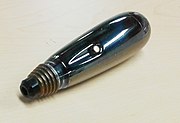The most fundamental example of a laser beam is the flashlight. The beam is spread out by a lens and forms an elongated cone. Lasers, however, can create a more narrow, focused beam that can travel longer distances. This is known as an extremely collimated beam. A laser’s wavelength is approximately one gigahertz. The lower the wavelength, greater energy is released.
It is important to be conversant with the various wavelengths available when using a laser to serve a specific purpose. Lasers all have a pointing accuracy tolerance which is the difference between the propagation axis and mechanical axis. This should be considered when selecting a mounting. These are the most popular wavelengths for lasers. The best wavelength for you is dependent on the scope of your project.
Lasers produce light by concentrating the energy of an excitation medium onto a tiny pellet of fuel. The high temperature of the beam causes the fuel in the chamber to burn, which creates a nuclear reaction that produces enormous quantities of energy. The technology comes from Lawrence Livermore National Laboratory. The technology could be an answer to the global energy problem. It may take some time before the technology becomes widely used, but it is definitely not impossible.
The heat produced by this process is intense that it is able to reach an extremely high melting temperature. The gas that is hot in the chamber causes the pellet to vaporize and then become fuel. Fusion can generate a great deal of energy and will be completely secure. The technology promises to be a huge step forward and is an exciting development in solar energy. The technology is the result of Lawrence Livermore National Laboratory. This technology will help create sustainable energy throughout the world.
In a laboratory lasers are utilized to power electric vehicles. A power plant will produce electricity by producing heat from gas. A laser could generate electricity in such an instance. It could also power a computer. The technology is still in development and hasn’t yet been made commercially available. While there are many advantages of the technology, it’s still in its early phases. While it’s not the perfect solution, it can help to make solar panels more affordable and produce renewable energy.
Lasers also offer the benefit of generating heat from different sources. The heat produced by these reactions can be transformed into electricity. This is an enormous benefit as the technology is much less expensive than the production of electricity from renewable sources. Lasers are able to generate energy and are more eco-friendly than other types of energy. It is still not commercially available. It is currently still in the process of research.
There are various kinds of lasers. The type you pick will depend on the kind of laser you are using. If you wish to produce light with a certain wavelength, then you need to use the Polarizer. This will provide you with the most effective results. If you want to make light that doesn’t require polarization it is possible to use an unpolarizer. You can also make a diffraction-limited laser. A diffraction-limited laser is the ideal choice for a light source that is small.
The most significant aspect of gold laser beams is their accuracy. A lens can regulate the intensity of a laser beam. A light source equipped with the polarizer could be utilized to make a variety of different products. It is possible to make better solar cells in this manner. After you’ve developed your own polarizer, you can also create it to be compatible with solar cells. These devices can be employed in labs to determine the intensity of light.
A pattern generator generates laser beams. It is possible to use the pattern generator to create different patterns. It is possible to use an online pattern generator to design your own patterns. They can be used to create a laser-based light which is not only narrow but also long-range. This can be very effective in situations where you need to be speedy. And because the power source is not extremely efficient, a laser with a diffraction limit can be made in a tiny space.


